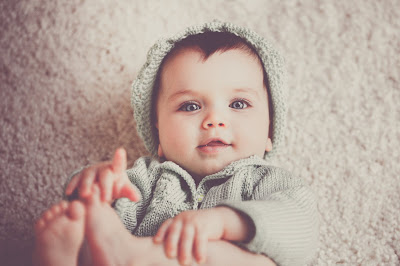In winter, you must dress your baby properly so that he/she does not go cold. However, it is also important not to overcook, so that heat does not pass. In this article we will explain how you should dress a baby and what clothes to choose.
Newborns do not adequately regulate body temperature, since their skin does not keep heat well and they lose it quickly. To avoid the loss of heat, you have to dress the baby with a piece of clothing more than we put on the adults. In winter, sudden changes in temperature are the main enemies of babies. Sometimes, fearing that they can catch cold, they are overly warm and vice versa.
We advise you, before dressing the baby, to take into account the activity you are going to do, since it is not the same to go for a walk in the park than to go to the mall. You must ensure that your child's temperature is as constant as possible. Your clothes must be of a fabric that allows you to perspire. Do not forget, that colds are usually taken after sweating. For this reason, we advise you to control the child's body temperature: observe the appearance of their skin or touch the nape of the neck. Do not forget to be foreseeable and always carry an extra coat in the walking bag.
Tips for dressing the baby
1. The garments must be practical. Your clothes should be easy and quick to remove, to change it comfortably. You must choose wimps and shorts with elastic waist or open between the legs, to facilitate diaper change.
2. Buttons and seams must be reduced. T-shirts and bodysuits with American style neckline are the most comfortable, because having wide openings can be easily put on and taken off.
3. It is preferable to choose garments made of natural fibers, since they have a pleasant touch, absorb moisture from the skin and allow it to perspire. The ideal material is cotton wool (as long as the baby is not allergic), velvet and polar.
How to know if the baby is well wrapped
• When you feel cold or hot, it is likely that the baby is experiencing the same sensation.
• To check if your child has heat, just touch the neck or forehead, much more reliable indicators than the hands or feet.
• When the child does not manage to maintain body heat shows signs of restlessness, his breathing becomes faster and, sometimes, he also cries.

Comments
Post a Comment